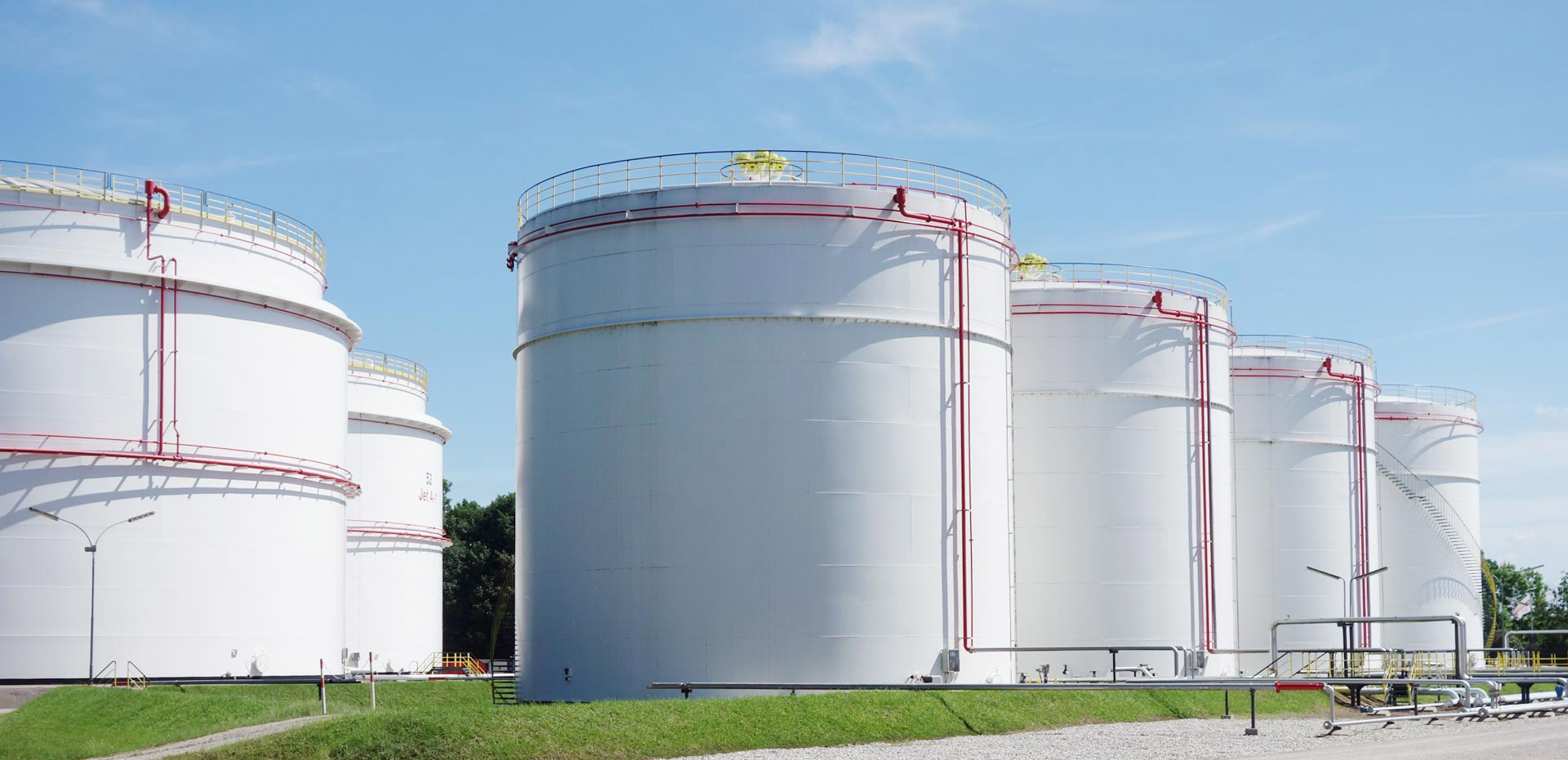Important Terms from A to Z
Middle Distillates / Gasoil
The term “middle distillates” is assigned to petroleum products obtained in the “middle” boiling range from about 180°C–360°C during the process of crude oil distillation. They are also called middle distillates because the products are removed at mid-height in the distillation tower during the multi-stage process of thermal separation.
In Germany, middle distillate is the technical term used for gasoil. Middle distillates, which are hence also known as gasoil, primarily include extra light heating oil (heating oil EL), and diesel fuel, as well as marine diesel oil (MDO) as an intermediate stage between middle distillates and heavy fuel oil, and jet fuel (also called Jet A-1 or kerosene).
A middle distillate is a clear, colorless to light yellow, flammable liquid. It has between ten and twenty carbon atoms, a density of not more than 0.860 kg/l at 15°C, and a flashpoint above 60°C.
Middle distillates or gasoils are produced in a refinery by crude oil distillation, which means the crude oil is split into its component parts. After desalination, the crude oil, heated by tubular furnaces, flows into the distillation tower and is fractionated under atmospheric pressure. The tower consists of a certain number of levels, each at different temperatures (declining from bottom to top). At the lowest level, atmospheric residues accumulate. On the level above (in the middle boiling range) heavy middle distillate condenses, followed by light middle distillate, and then the more volatile fraction, naphtha. The gaseous components are collected at the top of the distillation tower. The middle distillates are drained from sidestreams in the distillation column. There are two primary fractions from which the sales products with defined properties are blended in post-distillation refining processes.
Depending on the type of oil, the yield of middle distillates is between 25% and 40%. However, as demand for gasoil is higher, the residual fuels from crude oil distillation are split by catalytic or thermal cracking to increase the yield. In this way, 20% to 50% of the residual fuel can be converted to gasoil. Thus, the average yield of gasoils is about 40% of the volume of crude oil. The yield has been significantly increased through technical innovation in recent decades.
Status: December 2015
All information subject to change. Errors and omissions excepted.


